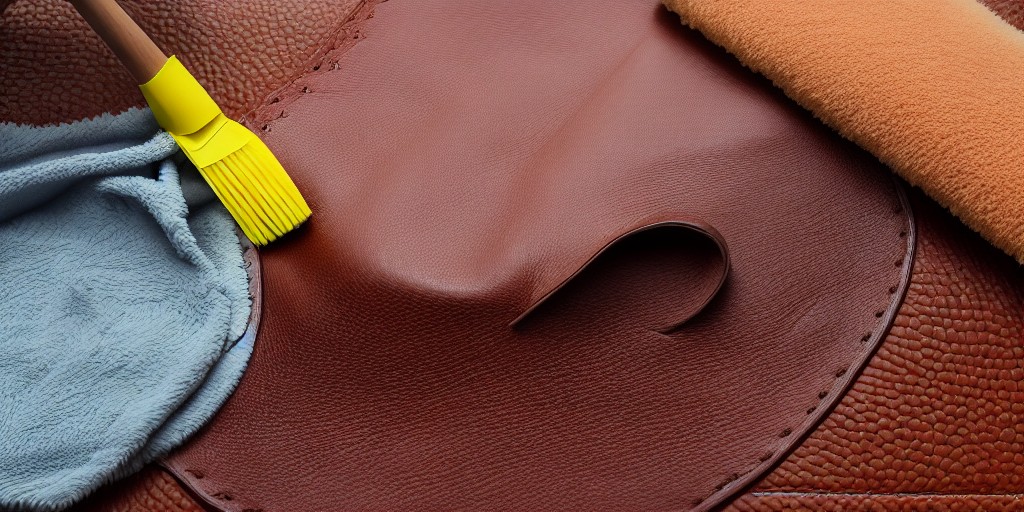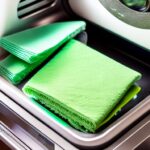Leather is a prized material that is used in many products, including furniture, clothing, and accessories. It is durable, stylish, and ages well if cared for properly. However, it can also be delicate and susceptible to damage from harsh chemicals. One such chemical is Clorox, a popular brand of bleach. In this article, I will explore whether Clorox can damage leather, and what steps you can take to protect your leather goods.
What is Clorox?
Clorox is a brand of bleach that is used to remove stains and whiten fabrics. It is a strong and powerful chemical that can be harsh on materials and surfaces. Clorox is made up of sodium hypochlorite, which is a corrosive substance that can cause damage to certain materials.
How does Clorox affect leather?
Leather is a porous material that can absorb liquids and chemicals. When exposed to Clorox, leather can become discolored, stained, or even disintegrate. The sodium hypochlorite in Clorox can break down the fibers in leather, causing it to become weak and brittle. This can result in cracking, peeling, and irreparable damage to the leather.
Can Clorox be used on leather?
No, Clorox should not be used on leather. It is too strong and can cause serious damage to the material. If you need to clean or remove stains from leather, there are alternative methods that are safe and effective.
How to clean leather without damaging it?
To clean leather without damaging it, use a mild soap and warm water. Avoid using harsh chemicals or abrasive cleaners that can scratch or discolor the leather. Mix a small amount of soap in a bowl of warm water and use a soft cloth to gently wipe down the leather. Rinse the cloth and wipe away any soap residue. Dry the leather with a clean cloth and let it air dry.
How to remove stains from leather?
To remove stains from leather, first, identify the type of stain. Different stains require different treatments. For example, ink stains can be removed with rubbing alcohol, while oil stains can be removed with baking soda. For general stains, mix equal parts lemon juice and cream of tartar to make a paste. Apply the paste to the stain and let it sit for a few hours before wiping it away with a damp cloth.
How to protect leather from damage?
To protect leather from damage, avoid exposing it to direct sunlight or heat sources, which can cause it to fade and dry out. Keep it away from water and moisture, which can cause it to warp and become moldy. Use a leather conditioner to keep it moisturized and supple, and store it in a cool, dry place when not in use.
What products can be used to clean leather?
There are many products that can be used to clean leather, including leather cleaners, saddle soap, and natural cleaners like vinegar and lemon juice. When choosing a cleaner, make sure it is specifically designed for leather and avoid using harsh chemicals that can damage the material. It’s also important to test any new product on a small, inconspicuous area of the leather before using it on a larger area.
What are the benefits of using natural leather cleaners?
Using natural leather cleaners can be beneficial because they are gentle on the material and don’t contain harsh chemicals that can cause damage. Vinegar, for example, can be used to remove stains and odors from leather, and lemon juice can be used to brighten and clean the material. These natural cleaners are also inexpensive and readily available.
Can vinegar be used to clean leather?
Yes, vinegar can be used to clean leather. Mix equal parts vinegar and water in a spray bottle and apply it to a soft cloth. Use the cloth to gently clean the leather, being careful not to saturate it with the solution. Rinse the cloth with water and wipe away any vinegar residue. Dry the leather with a clean cloth and let it air dry.
How to remove ink stains from leather?
To remove ink stains from leather, apply rubbing alcohol to a cotton ball or swab and gently dab the stain. Be careful not to rub the stain, as this can cause it to spread. Continue dabbing the stain until it fades, then wipe away any alcohol residue with a damp cloth. Dry the leather with a clean cloth and let it air dry.
What to do if Clorox gets on leather?
If Clorox gets on leather, act quickly to minimize the damage. Use a clean, dry cloth to blot away as much of the Clorox as possible, being careful not to spread it around. Then, mix a small amount of mild soap with warm water and use a soft cloth to gently clean the area. Rinse the cloth with water and wipe away any soap residue. Dry the leather with a clean cloth and let it air dry. If the damage is extensive, it may be necessary to seek professional repair.
How to repair Clorox-damaged leather?
Repairing Clorox-damaged leather can be challenging and may require the help of a professional. Depending on the extent of the damage, the leather may need to be patched, re-dyed, or replaced entirely. It’s important to take your leather goods to a reputable repair shop that specializes in leather repair.
When should you call a professional?
You should call a professional for leather repair if the damage is extensive or if you’re unsure how to proceed. A professional leather repair shop can assess the damage and recommend the best course of action. They can also provide advice on how to care for your leather goods to prevent future damage.
Conclusion
In conclusion, Clorox should not be used on leather as it can cause serious damage to the material. Instead, use gentle cleaners and natural remedies to clean and care for your leather goods. If Clorox or other harsh chemicals come into contact with your leather, act quickly to minimize the damage and seek professional repair if necessary.
FAQs on Can Clorox Damage Leather?
Can Clorox be used to clean white leather?
No, Clorox should not be used to clean white leather as it can cause discoloration and damage.
Can leather be washed in a washing machine?
No, leather should not be washed in a washing machine as it can damage the material. Instead, use a mild soap and warm water to clean leather by hand.
What is the best way to store leather goods?
Leather goods should be stored in a cool, dry place away from direct sunlight or heat sources. Use a dust bag or cover to protect them from dust and dirt.
Can leather be waterproofed?
Yes, leather can be waterproofed with a waterproofing spray or wax. Follow the manufacturer ‘s instructions for best results.
Can leather be conditioned too much?
Yes, over-conditioning leather can cause it to become too soft and lose its shape. It’s best to follow the manufacturer’s instructions for leather conditioner and not to over-apply it.
How often should leather goods be cleaned and conditioned?
The frequency of cleaning and conditioning leather goods depends on how often they are used and the conditions they are exposed to. In general, it’s a good idea to clean and condition leather goods every 6-12 months to keep them looking their best.
Can leather be repaired if it has cracks or tears?
Yes, leather can be repaired if it has cracks or tears. Depending on the extent of the damage, a professional leather repair shop can patch, re-dye, or replace the damaged area.
Is it okay to use a hair dryer to dry leather?
No, it’s not recommended to use a hair dryer to dry leather as it can cause the material to dry out and become brittle. Instead, let the leather air dry naturally.




